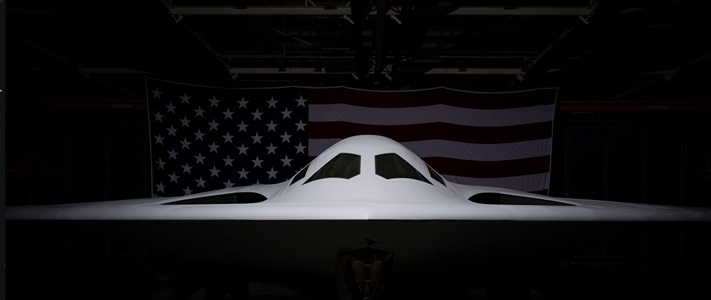Referred to as a time machine, Webb’s instruments use infrared vision to peer back over 13.5 billion years and view the earliest stars and galaxies.
Head in the Clouds

By Stephanie Flyger
While often critiqued as a cliché conversation topic, the weather plays one of the biggest factors in our daily decisions. It affects how we dress, how we drive and the way we spend our time. Nothing is untouched by weather. Even the most advanced military technology and missions need help to withstand the elements and at Northrop Grumman, our atmospheric scientists are the in-house experts on weather and its potential impact on the U.S. military.
Their role is two-fold: help make products weather-resistant by including the impacts from the atmosphere and space environment into their designs and provide forecasting data and engineering support services for military weather teams. And sometimes this means a lot of time with heads spent in the clouds.

Counting Every Cloud
The U.S. Department of Defense (DoD) has been involved in tracking and attempting to accurately forecast clouds since the dawn of the satellite era in the 1960s. The white formations of water droplets can disrupt communication signals or block a visual line of sight, making or breaking decisions for the warfighter. As battlefield technology improved, the need for precision in weather forecasts also increased. A general forecast of “partly cloudy” didn’t cut it. U.S. forces needed to know if, at a specific location at a specific time, there would be a puffy cloud that got in the way. Northrop Grumman developed world class technologies and systems to answer this question.
Over the last 20 years, our atmospheric scientists have created a high-fidelity cloud model that covers the globe and provides instantaneous data. This second-generation Cloud Depiction and Forecast System (CDFS II) collects weather data from military, civilian or other friendly countries’ satellites, and then that information gets fused together to create a picture of clouds around the world at any given instant in time. There’s nothing else like it on the market.
“That instantaneous nature as well as that global reach makes the capabilities that we've developed something that most other people have never even really attempted to do. It’s a really fascinating challenge,” said Tim Nobis, systems engineering manager who leads a group of atmospheric scientists at Northrop Grumman. “And I would argue we have some of the deepest subject matter expert capabilities in this area because of the fact we’ve had this heritage for as long as we do.”
Tim and his team have been defining possible in this arena for decades through various contracts with DoD. If a customer wanted to know if, at noon tomorrow, at a specific longitude and latitude, a pilot or satellites would be able to see the ground, the Northrop Grumman team could tell them with unprecedented accuracy. In a world that constantly demands immediate results, they’re one step ahead by delivering the future.
The Cutting Edge of Cloud Properties
Going beyond where and when the clouds are, the next challenge for Tim’s team is identifying what a cloud is made of in terms of properties like opacity and water content. DoD is developing new sensors that can see different parts of the electromagnetic spectrum, which is affected by the properties of clouds. Our eyes look at the world at a very specific wavelength, so we see all colors from red to violet. Satellites can be created to see wavelengths beyond those we utilize, like infrared or ultraviolet. Clouds reflect those wavelengths too, and cloud properties — such as whether the cloud is ice or liquid, or whether it is very thin or thick — impact how these wavelengths are affected. Knowing that information can be used to the warfighter’s advantage; using a number of wavelengths, the military can integrate that data into a more complete picture to “see through” the clouds for carrying out their missions.
As more sensors are created for DoD that have even more capabilities, it creates additional opportunities for atmospheric scientists to create and run models that forecast the cloud properties.
“We’re being continuously asked to push the envelope when it comes to technology,” said Tim. “Our extensive experience in this cutting-edge world means we're poised to help the military come up with what that next-generation cloud forecast system actually looks like.”
More Stories


10 Facts About Northrop Grumman's B-21 Raider
The B-21 will join the nation’s triad as a visible deterrent, supporting national security and assuring the nation’s allies and partners.

Under the Weather
Jim and his team play an important role in ensuring a product is ready to face a whole slew of unforeseen threats when out in the field.